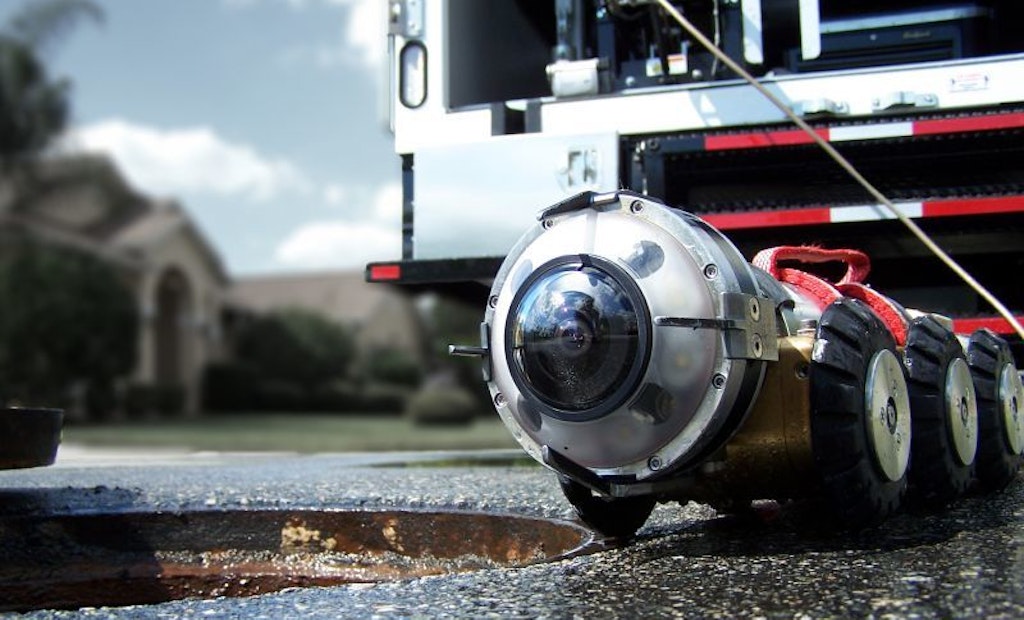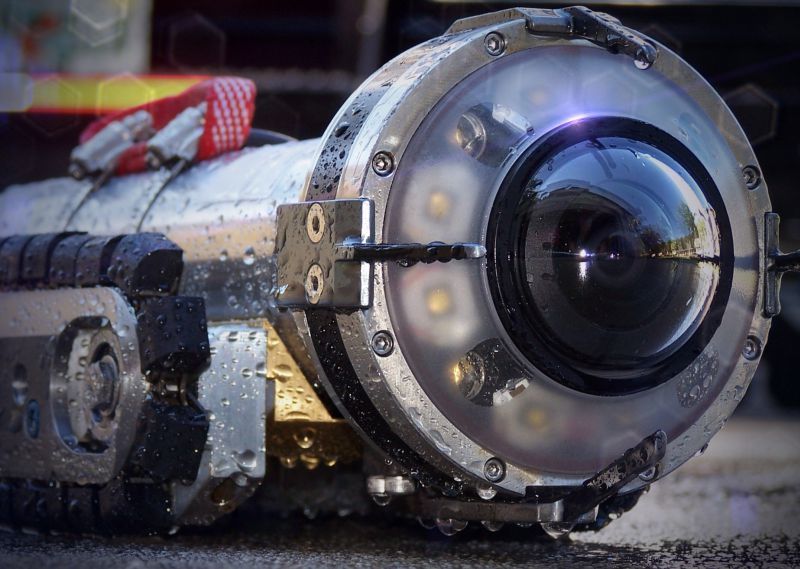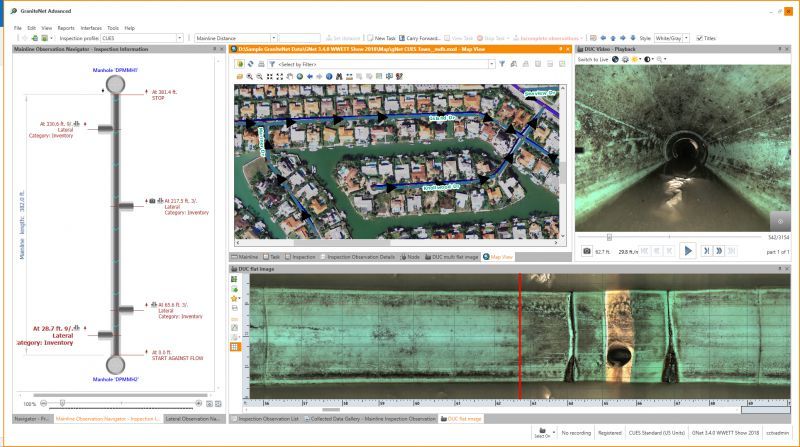Interested in Inspection?
Get Inspection articles, news and videos right in your inbox! Sign up now.
Inspection + Get AlertsBetween 700,000 and 800,000 miles of public sewer run below homes, businesses, parks and playgrounds across the U.S. — much of it largely brittle if not broken.
Improving that infrastructure first requires thorough inspection and condition assessment to properly catalog, document, quantify and prioritize the repair or replacement of each asset.
Considering the quantity of assets and how swiftly the pipeline infrastructure is deteriorating, municipalities should consider embracing new technologies that enable rapid assessment of pipelines while providing the highest quality data to efficiently quantify repair and replacement needs.
Digital side-scanning technology offers a solution for municipal entities to meet the ever-increasing challenges and demands of America’s failing sanitary sewer and stormwater systems.
New approach
Most municipalities lack the proper inspection equipment to perform thorough condition assessments of all of their pipeline assets within an appropriate amount of time.
Having an active pipeline inspection program with traditional CCTV equipment in some cases is no longer sufficient to meet the demands most municipalities face. Every dollar must be spent as wisely as possible.
The advantages of digital side-scanning inspection are quantifiable and enable the operations and engineering teams to work together to rapidly perform condition assessments of an entire pipeline system, but most important, to collect high-quality, usable data to make appropriate repair and replacement calls to ensure defensible, efficient and wise spending.
Thorough assessment
While fixing pipes will correct overflows and other pipe-related issues, the difficulty in that process begins far before making the necessary repairs or replacement. With over 700,000 miles of public sewers in the U.S., these pipes must initially have a condition assessment performed via a visual inspection in order to determine whether they are in good standing or in need of repair or complete replacement. This proves to be troublesome for most municipal utilities that are underequipped to properly inspect the current state of their sanitary and stormwater systems.
From the smaller town of Framingham, Massachusetts, with 68,000 residents who were facing $200 million for repairs, to the cautionary tale of Atlanta’s $2 billion overhaul of its system, the stories continue to repeat over and over again from communities across the U.S. having major sewer issues, with few reported on a national level.
Sanitary sewer backups are not just an inconvenience, but also a major public health concern. Municipalities can avoid the majority of these situations by having an effective and efficient pipeline condition assessment program and utilizing the latest technologies available to rapidly inspect an entire city system.
While population density is a good indicator of areas with the most repair and replacement needs, every municipality, regardless of size, should have a thorough condition assessment program in place for their pipeline assets.
Any municipality that does not have an active inspection program is doing a disservice to the residents and the city. They are essentially spending capital funds blindly for repairs and replacements on pipes that may never have been assessed or that have not been assessed for a long time. A lack of data leads to further indecision or wrong decisions being made for pipeline repairs.
Solution to the problem
Early adopters of digital side-scanning technology have been more than pleased with the results. One of those early adopters, McKim & Creed, an engineering firm with numerous locations throughout the U.S., has been using the technology since May 2014.
Greg Anderson, vice president for McKim & Creed, feels that their pipeline condition assessment programs for various entities has doubled in production over traditional analog surveys.
Anderson says that the quality of the digital side-scanning data enables his end clients to make better-informed decisions for repair and replacement over that of traditional CCTV surveys. “The quality of the video stream is substantially more defined, and the evaluation process much easier to complete,” he says.
Side-scanning camera systems are designed to provide the highest quality video/photos for review along with significantly increasing footage while augmenting the quality of data available for condition assessment.
The technology works by capturing several images per second, which are then stitched together, producing three deliverables: high-resolution video that is a permanent and accurate record with the ability to virtually pan, tilt and zoom to any area of interest; a flat unfolded view of the pipe from manhole to manhole (multiflat view), and an expanded flat unfolded view of the pipe for close-up views of defects and to perform measurements.
The flat view provides the ability to quickly inspect and review thousands of feet of pipe in a matter of hours instead of days, allowing you to make the best use of the one resource that is not replaceable: time. When compared to traditional analog camera surveys, the time savings are significant.
The Metropolitan St. Louis Sewer District was also quick to embrace the technology, and the results are clear. A footage report from September 2013 provided by the district showcases the type of production increases they are experiencing with the digital side-scanning systems over their remaining traditional CCTV systems.
The two digital side-scanning trucks outperformed the traditional CCTV systems by 4,023 feet. Essentially, the digital side-scanning trucks were three times more productive in the same working day than their traditional counterparts.
Beyond the potential increase in data collection, what’s more important is the increase of quality sustained with the digital side-scanning technology over traditional systems.
The digital side-scanning technology advancement most notably enables us to view the interior of a pipe like never before, not missing a single detail. The camera captures the entire 360 degrees of the pipe, which means fewer errors and elimination of repeat inspections and high-resolution images to ensure the condition assessment of the pipe will be accurate and properly coded. That results in the correct rehabilitation or repair call being scheduled.
Additionally, the system improves accuracy and consistency, even though inspections are completed within a compressed time frame.
A better view
Digital side-scanning technology will provide a comprehensive, 360-degree view of the pipeline while allowing rapid condition assessment to make intelligent, informed decisions on where to spend repair and replacement dollars. Pipeline condition assessment and maintaining a fleet of inspection vehicles is expensive. However, the expenses of not having an inspection program that utilizes the best available technologies on the market can be even greater.
Digital side-scanning technology can help you identify costly infiltration and thus save funds related to pumping, treatment and disposal. It can also help rapidly identify problem areas and major pipeline issues, which allows you to react before there is a backup and possible fines due to an overflow.
By maintaining an inspection program that includes digital side-scanning technology, there is less risk of regulatory action and an enhanced reputation for proper operation and management of the public sewer system.
Digital side-scanning technology is proven and reliable, and will accelerate your municipality in the direction of success.
About the author: Chris Parker is a regional sales manager for CUES.
Visit the CUES, Inc. Storefront







